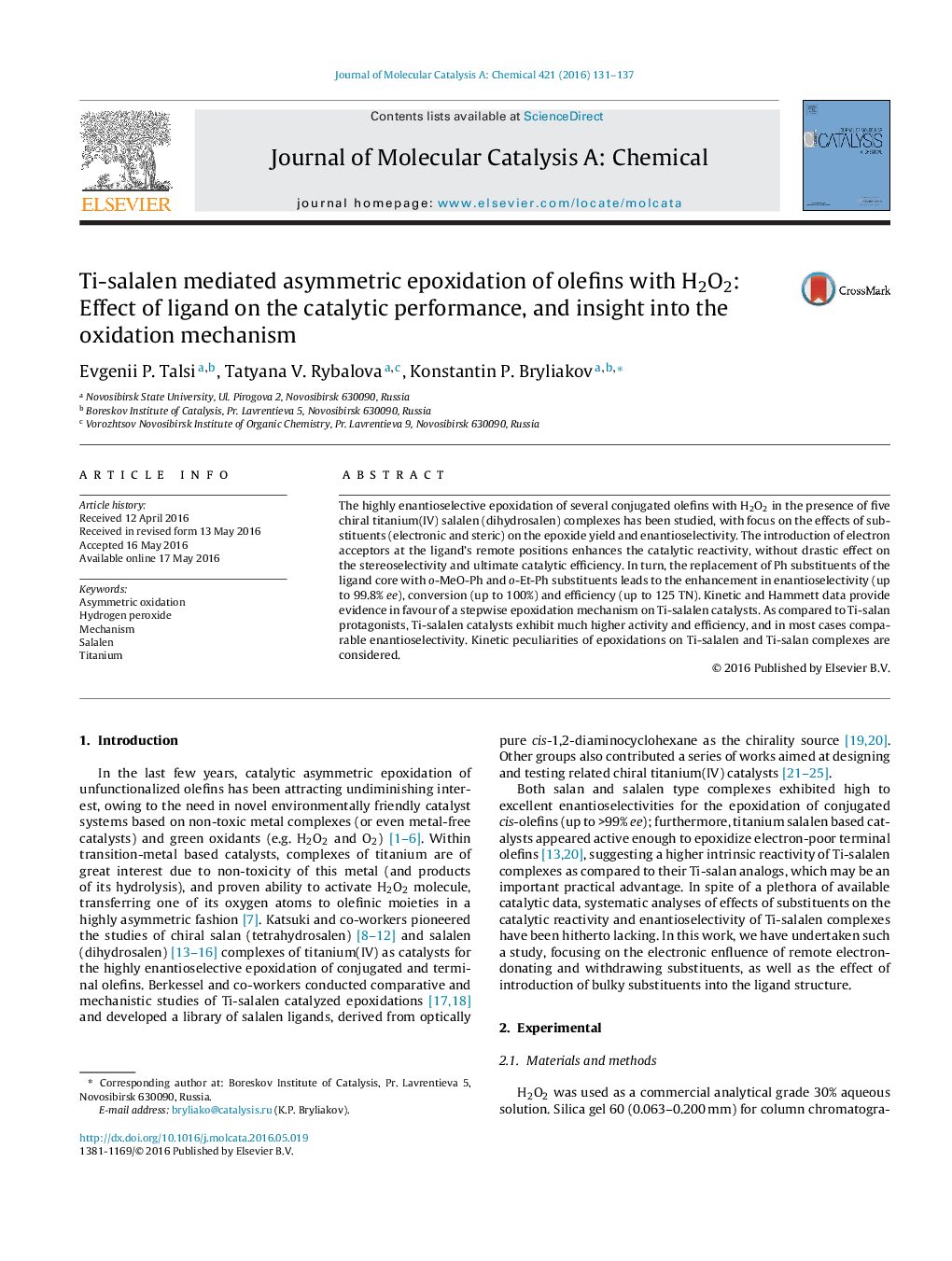| Article ID | Journal | Published Year | Pages | File Type |
|---|---|---|---|---|
| 64622 | Journal of Molecular Catalysis A: Chemical | 2016 | 7 Pages |
•Effect of salalen ligand structure on the Ti-salalen catalyzed highly enantioselective epoxidation with H2O2 has been studied.•Ti-salalen catalysts exhibit higher activity and efficiency than their Ti-salan counterparts.•Kinetic data give evidence for a stepwise epoxidation mechanism.•The oxidation rate and the enantioselectivity are governed by different reaction steps.
The highly enantioselective epoxidation of several conjugated olefins with H2O2 in the presence of five chiral titanium(IV) salalen (dihydrosalen) complexes has been studied, with focus on the effects of substituents (electronic and steric) on the epoxide yield and enantioselectivity. The introduction of electron acceptors at the ligand’s remote positions enhances the catalytic reactivity, without drastic effect on the stereoselectivity and ultimate catalytic efficiency. In turn, the replacement of Ph substituents of the ligand core with o-MeO-Ph and o-Et-Ph substituents leads to the enhancement in enantioselectivity (up to 99.8% ee), conversion (up to 100%) and efficiency (up to 125 TN). Kinetic and Hammett data provide evidence in favour of a stepwise epoxidation mechanism on Ti-salalen catalysts. As compared to Ti-salan protagonists, Ti-salalen catalysts exhibit much higher activity and efficiency, and in most cases comparable enantioselectivity. Kinetic peculiarities of epoxidations on Ti-salalen and Ti-salan complexes are considered.
Graphical abstractFigure optionsDownload full-size imageDownload high-quality image (90 K)Download as PowerPoint slide
